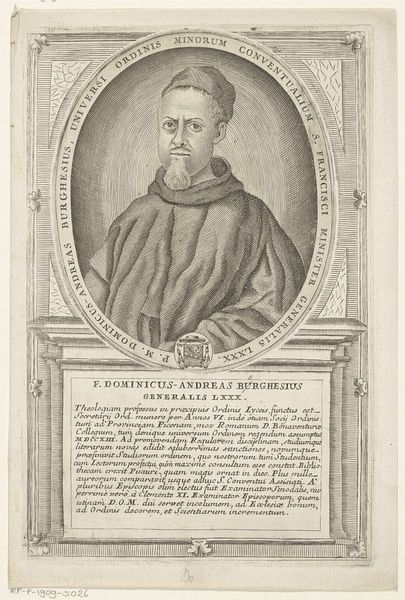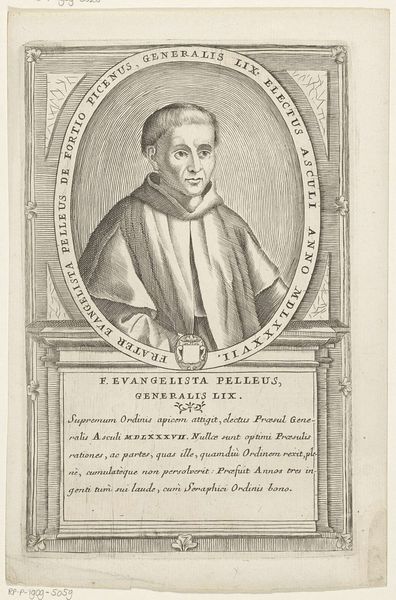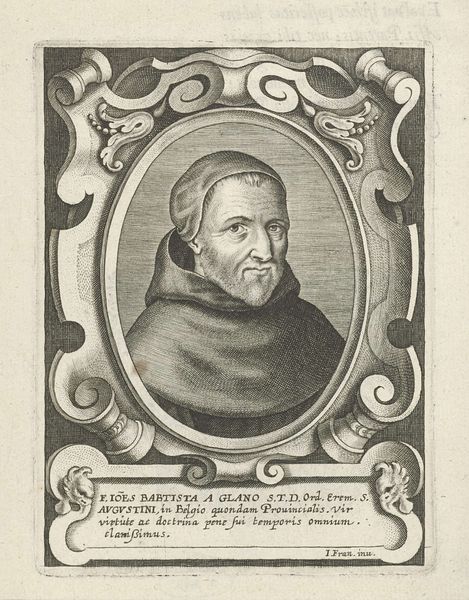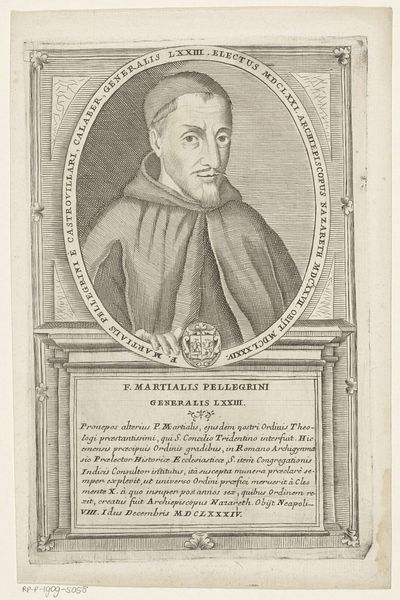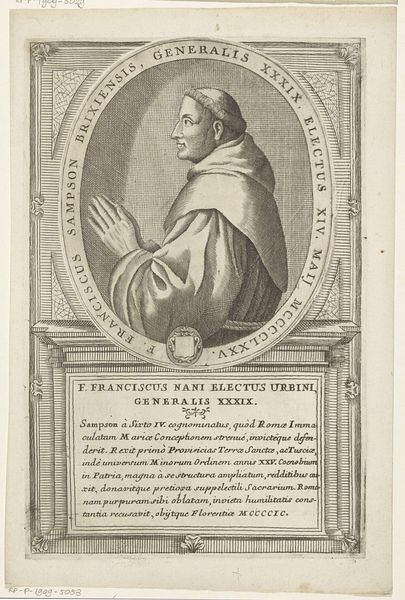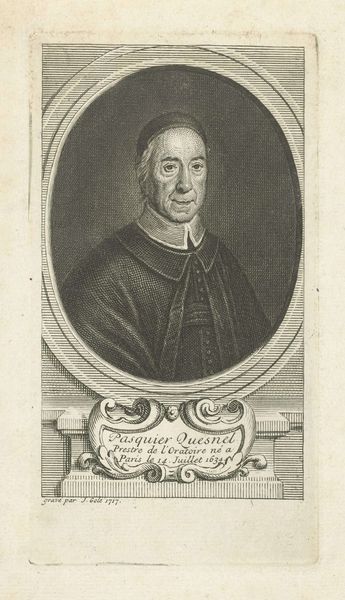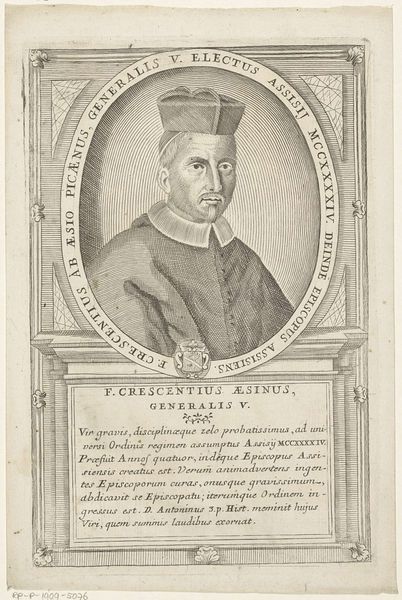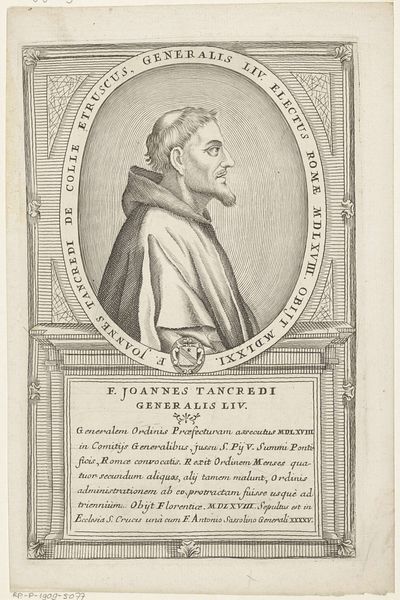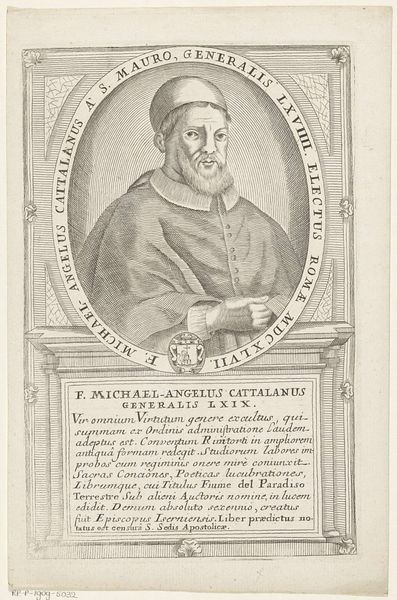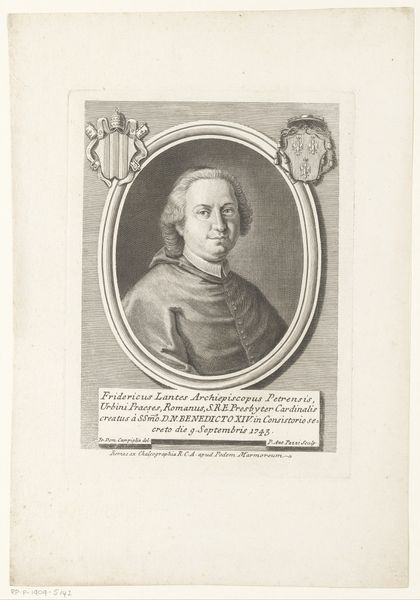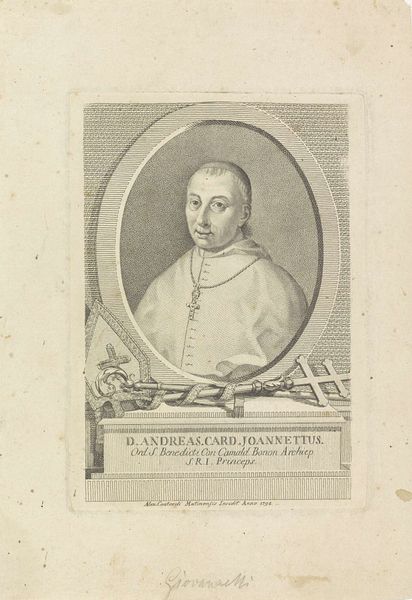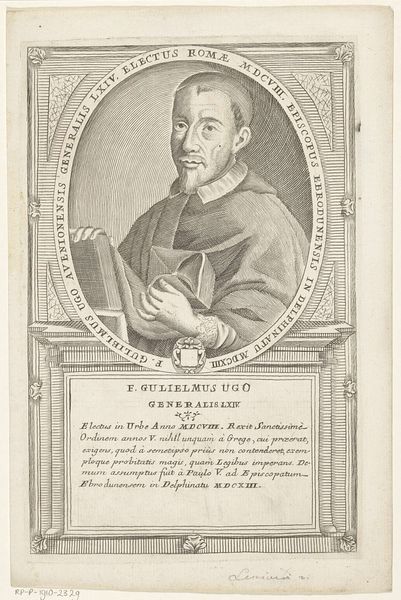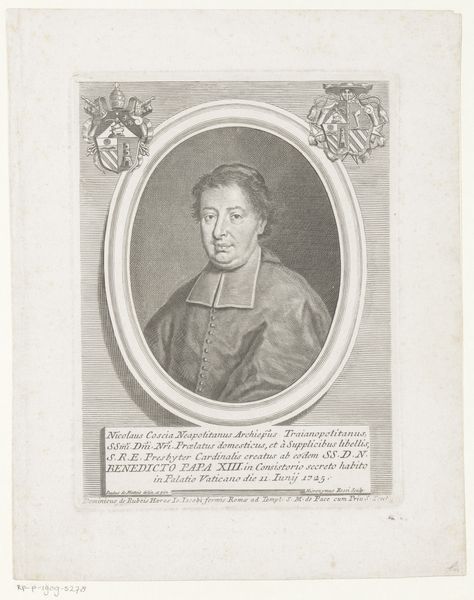
Portret van Jacob Bassolini, 35ste Minister Generaal van de franciscaner orde 1710 - 1738
0:00
0:00
print, engraving
#
portrait
#
baroque
# print
#
old engraving style
#
history-painting
#
engraving
Dimensions: height 252 mm, width 156 mm
Copyright: Rijks Museum: Open Domain
Curator: Standing before us is an engraving, dating roughly between 1710 and 1738, titled "Portret van Jacob Bassolini, 35ste Minister Generaal van de franciscaner orde" – a portrait of Jacob Bassolini, the 35th Minister General of the Franciscan Order. It's a baroque piece attributed to Antonio Luciani. Editor: It strikes me as a somber piece. The composition is dominated by text. Even Bassolini’s portrait feels confined, doesn't it? What materials were commonly used in prints such as these, and how did that influence accessibility and distribution at that time? Curator: This is an engraving, a printmaking process using a metal plate—usually copper—into which the design is cut using a tool called a burin. Ink is applied to the plate, then wiped from the surface, remaining only in the incised lines. High social mobility aided the dissemination of the iconography. Notice the Franciscan coat of arms just below the central portrait and the Latin inscription? Editor: Absolutely, a classic deployment of symbols! That Franciscan coat of arms…the cross, the arm...all carefully positioned. Does the text beneath reveal the aspirations, fears, or even propaganda efforts linked to Bassolini? What was his legacy, and how did they attempt to cement it? Curator: The inscription, though difficult to fully translate without careful study, tells us about Bassolini's life, career as a theologist, the posts he held within the order. His role in dictating some general vicars suggests potential power struggles in the history. It shows us about who produced and consumed those works as part of material Catholic culture in 18th century Europe. Editor: Power struggles, indeed. But what psychological impact did these images have? Someone sees this, displayed prominently perhaps in a friary – do they contemplate faith, or feel subservient to an institution carefully managing its image? Does Bassolini, so meticulously depicted, transcend the particular to represent ideals? Curator: A complex dance between the concrete individual and the abstract idea! Engravings like this weren't mass-produced in the modern sense, requiring skilled labor and materials that reflected the engraver's trade as part of a network that produced this piece of Catholic visual history. Editor: So in analyzing the work from the perspective of image circulation, from the cultural imprint of those signs, we are confronted by tangible proof about those periods of cultural diffusion and the human aspirations that motivated the print’s crafting in the first place. Curator: Exactly. I come away with a deepened appreciation for printmaking’s place in that material culture, while recognizing how an engraver translated status to something of common value, and spread its values. Editor: It’s an intersection, this piece, where devotion, skill, dissemination, all convene. It urges the viewer, including us, to acknowledge our entanglement with both its symbols and its materiality.
Comments
No comments
Be the first to comment and join the conversation on the ultimate creative platform.
